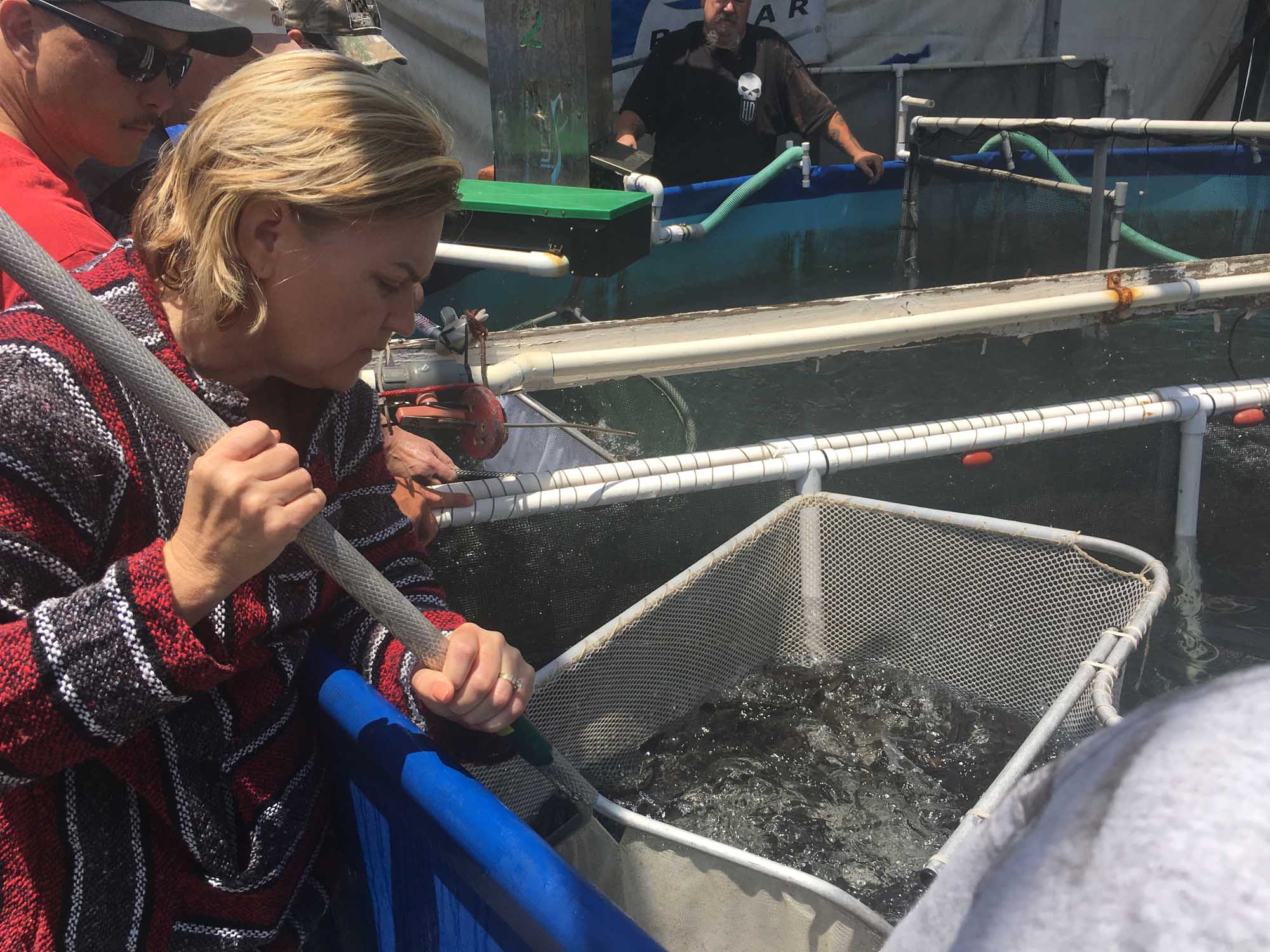Boat capsizes during SEALab black sea bass release

LA County Lifeguards tow Cabrillo Museum’s capsized Radon back to King Harbor. Photo
Four Cabrillo Aquarium staffers were pitched into the Pacific during an operation to reintroduce black sea bass, formerly housed by Redondo Beach’s now-closed SEALab, into ocean waters last Thursday, June 27.

Volunteer Lisa Rodriguez collect a net-full of white sea bass to release into the ocean Photo
“There was a weight distribution issue and the boat started lifting — four staffers were hanging off the side with this big fish, with a bunch of water and a holding tank, borrowed from someone else,” said Ed Mastro, Cabrillo’s Exhibits Director. “It hit the point of no return and capsized — just weight distribution and an unfortunate accident.”
None of the four staffers was injured when the boat capsized outside of King Harbor, Mastro said. The boat, a Radon 26 footer, is currently being restored; it suffered no structural damage, but its electronics were likely damaged, Mastro said. The four were rescued by nearby Baywatch lifeguards.
“The County Lifeguards were watching nearby, half-participating in the adventure…and they were on scene to take the guys out of the water and dry them off,” Mastro said. Lifeguards then towed the capsized boat back to Redondo’s King Harbor, where it was righted and trailered.
The move to reintroduce two large black sea bass into the Santa Monica Bay was precipitated by the weekend’s closure of SEALab, Redondo Beach’s aquarium and marine education facility within King Harbor. SEALab was abruptly closed by its stewards, the Los Angeles Conservation Corps, after some internal debate spurred by the building’s purchase by developer Leo Pustilnikov.
SEALab opened in 1998 as the result of a settlement between then-Redondo Generating Station owner Southern California Edison and the Earth Island Institute, and has had free rent and thousands of dollars in funding from both Edison and AES, which honored their agreement upon purchasing the plant.
Pustilnikov agreed to continue the program’s free rent. However, sources close to the program said that the two sides were not able to agree on a lease, which caused SEALab problems in finding long-term and short-term grant money.
After SEALab announced its closure, its related programs began winding down. The White Sea Bass grow-out program, which has long been housed at the SEALab, released its last group of fish on Saturday, June 22. Redondo Beach staff have been urged by City Council members to work with program leads John Whitaker and Rich Ford to potentially find the white sea bass a new home in King Harbor.
“The only place to go is a slip — we can’t build something in the harbor, because of the surge…but we’re on a limited budget, and we don’t have the money to rent a slip, so we hope that the city can help us get access,” Whitaker said. “So we hope that we can design a fiberglass pen that sits in the water.”
A second black sea bass was also released that day, in King Harbor rather than in the ocean, owing to the capsized boat.
“As I tell staff, we’re in it for ocean health. It was a great day for the ocean, and we got this fish released — it just happened that it wasn’t the best day for the boat,” Mastro said.


